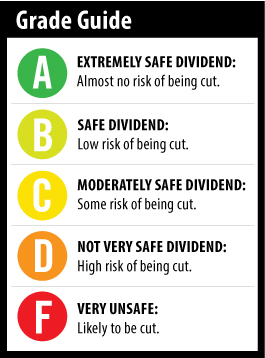| Image via CrunchBase |
New York. Jun.27, stock picks .- This NSA scandal has made a lot of people uneasy. No one likes the idea of Big Brother tracking our every move. I don't like the idea any more than the next person. But if it's going to happen anyway, we might as well try to make some money from it.
That's what investors in L-3 Communications (NYSE: LLL) hope.
Actually, I couldn't tell you if L-3's technology is involved in the NSA phone data controversy. But L-3 is a defense contractor that has many different segments including electronic surveillance capabilities. And despite the sequester, defense contractors - including L-3 - have done very well over the past year.
The stock pays a 2.7% dividend yield. We know that L-3's technology keeps us safe. Can we say the same thing about the company's dividend? The company has raised the dividend annually for 10 years in a row. That's a good starting point. It tells us management understands its fiduciary duty to shareholders and is comfortable returning more capital to the owners of the company every year. That sets the bar pretty high.
No Income Growth but Dividend Keeps Rising
For several years, L-3's revenue, profits and cash flow have been stagnant. In fact, in 2012, earnings were below the level of the past few years, though cash flow from operations was exactly at the same level as 2011.
Last year, L-3 generated $1.23 billion in cash flow from operations. Capital expenditures totaled $210 million, which gives us free cash flow of $1.02 billion. That's lower than the $1.04 billion in 2011 and $1.09 billion in 2010.
The company paid out $195 million in dividends in 2012 for a payout ratio of just 19%. The previous year it paid $188 million in dividends and $184 million in 2010. So although earnings and cash flow growth are non-existent, L-3 has been able to raise the dividend each year because it pays so little of its cash flow out in dividends.
This year, net income is expected to slip 5% and free cash flow is projected to fall to $950 million. L-3's last dividend raise was 10%, and it has a history of double-digit dividend increases.
Let's assume that in the next year, shareholders get another 10% boost with no change in share count. That would lift dividends paid to $215 million, which gives us a still very comfortable payout ratio of 23%.
In 2014, analysts predict cash flow will climb again but still be below 2012 levels.
So L-3 is an interesting situation in that there is no meaningful growth expected for several years, yet the payout ratio is so low, it should be able to continue to raise the dividend for years to come.
In fact, the lack of growth could force management's hand to raise the dividend yield even more in order to make the stock more attractive. Since it will no longer appeal to growth investors, perhaps a higher yield would appeal to a different group of investors. In fact, the company could even double the yield and still be well within my payout ratio comfort zone of 75% or lower.
I don't expect management to make such a drastic increase. But if the stock stalls due to lack of growth, I wouldn't be surprised if it steps on the gas a little bit to draw some interest from the income crowd.
A solid history of dividend raises and a very low payout ratio usually is enough for me to give a stock a dividend safety rating of A. Considering the lack of growth, however, I don't expect a dividend cut, but I'm going to be a little more cautious with my rating.
Dividend Safety Rating: B
If you'd like me to take a look at the dividend safety of one of your stocks, leave the ticker symbol in the comments section below.



No comments:
Post a Comment